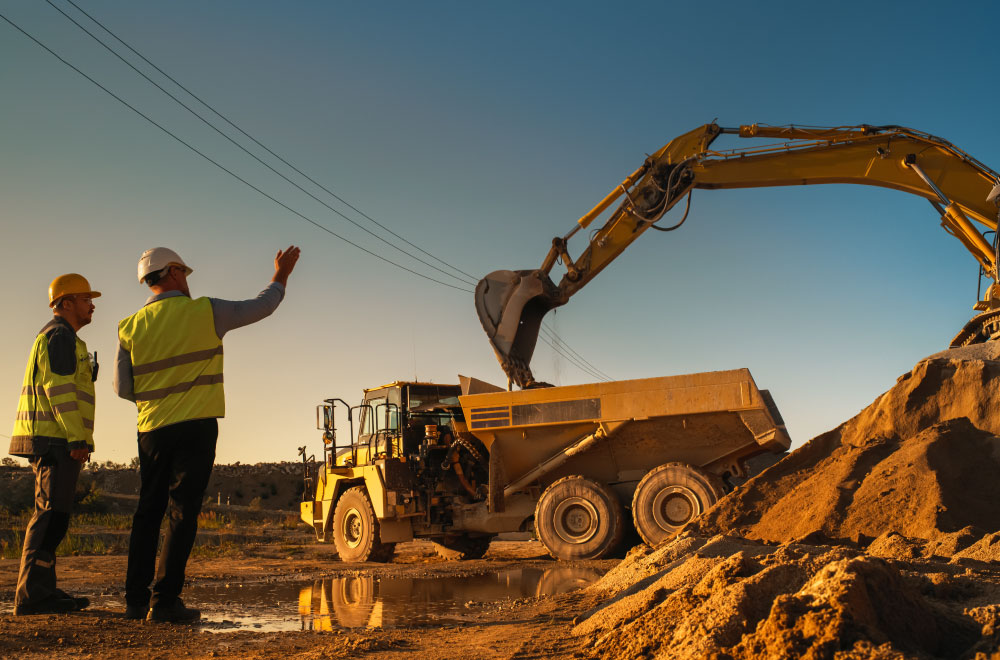
In the modern business landscape, having the right equipment is crucial for staying competitive. Understanding the basics of equipment leasing can empower businesses to make informed choices that align with their strategic goals and operational needs, ensuring they remain well-equipped to tackle the challenges of their industry.
Key Takeaways:
- Leasing offers businesses operational flexibility and the ability to stay current with technology without the heavy commitment of purchasing.
-
Upfront affordability of leasing helps in effective cash flow and budget management.
-
Lease payments may offer tax benefits, contributing to financial efficiency.
What is Equipment Leasing?
Equipment leasing is a strategic financial arrangement allowing businesses to access necessary equipment through a rental agreement, bypassing the need for a direct purchase. This model is beneficial for leveraging the latest technology or machinery without incurring substantial upfront costs and long-term purchase commitments. It embodies a pay-for-use principle, aligning operational needs with financial flexibility.
Key Terms You Should Know
Understanding the terminology associated with equipment leasing can help explain many of its features:
- Amortization: The process of spreading the cost of the equipment over the lease term, reflecting how lease payments may be allocated between principal reduction and interest.
- Balloon Payment: A large, final payment due at the end of some lease agreements, particularly in capital leases, to purchase the equipment.
- End-of-Lease Options: Choices available to the lessee at the end of the lease term, typically including returning the equipment, renewing the lease, or purchasing the equipment.
- Lease Agreement: The contract between the lessor (owner) and the lessee (user), outlining the rights to use the equipment for a specific period in exchange for payments.
- Lease Term: The duration of the lease agreement during which the lessee has the right to use the equipment.
- Purchase Option: A clause in the lease that allows the lessee to buy the leased equipment at the end of the lease term, often at a predetermined price.
- Residual Value: The estimated value of the leased equipment at the end of the lease term. This value can affect lease payments and options at the lease's conclusion.
Advantages of Equipment Leasing
The benefits of equipment leasing extend far beyond mere financial flexibility; they represent a strategic decision that supports business growth and fosters technological advancement. Here's a closer look at these advantages:
Enhanced Financial Flexibility
Leasing typically demands lower initial investments compared to outright purchases, thereby reducing the financial burden on business capital. This approach offers greater room for managing cash flow and reallocates resources to other vital segments of the business.
Continuous Access to Cutting-edge Technology
Through leasing, businesses have the opportunity to regularly update their equipment to newer models at the conclusion of a lease period. This ensures that a business is always at the forefront of technology, equipped with the most current tools in their field.
Potential Tax Advantages
Payments made for leasing equipment can often be written off as business expenses, which might help in reducing the overall taxable income. However, it's crucial to consult with a tax expert to understand the specific benefits in detail.
Tailored Leasing Solutions
Leasing offers the flexibility to customize agreements according to unique business requirements. This includes adjustable terms, payment plans, and choices concerning what happens at the end of the lease, thereby providing solutions that are specifically designed to meet the distinct needs of a business.
Types of Equipment Leases
Operating Leases
Operating leases are similar to renting equipment for a short-term period, which is typically less than the asset's useful life. This type of lease is particularly suitable for businesses looking to keep up with the latest technology or equipment trends without committing to long-term ownership. The lessee has the flexibility to return the equipment at the end of the lease term, making it an attractive option for equipment that rapidly depreciates or becomes obsolete.
Fair Market Value (FMV) Leases
FMV leases provide businesses with the option to purchase the leased equipment at its fair market value at the end of the lease term, return the equipment, or renew the lease. This type of lease offers significant flexibility and is often chosen for equipment that may be subject to rapid technological advances, as it minimizes the risk of being stuck with obsolete equipment.
Terminal Rental Adjustment Clause (TRAC) Leases
TRAC leases are specific to commercial vehicles and trailers and offer a flexible structure where the lease payments can be adjusted based on the anticipated residual value of the vehicle at the end of the lease term. This type of lease is beneficial for businesses in the transportation industry, as it provides tailored solutions that can account for the high usage and varying depreciation rates of commercial vehicles.
Capital Leases
Capital leases, also known as finance leases, are more like traditional loans and are used for long-term equipment needs. In a capital lease, the lessee effectively assumes all of the risks and benefits of ownership. These leases are characterized by longer lease terms, and at the end of the lease, the lessee usually has the option to purchase the equipment at a nominal price, often referred to as a "bargain purchase option." This type of lease is ideal for acquiring equipment that a business intends to use for a significant portion of its useful life.
Commercial Finance Agreements
Although not a lease in the traditional sense, a commercial finance agreement (CFA) is a financing arrangement where a lender provides capital to a business for the purchase of equipment, and the business repays the loan over time. CFAs are used when a straightforward loan structure is preferred over a leasing arrangement, offering businesses ownership of the equipment from the outset.
Master Lease Lines of Credit
A master lease line of credit is a flexible leasing arrangement that allows businesses to acquire multiple pieces of equipment under a single master lease agreement. This setup provides the convenience of adding new equipment to the lease with agreed-upon terms without negotiating a new contract each time. It's particularly beneficial for businesses that anticipate gradual expansion or the need for various equipment acquisitions over time.
Each of these leasing options offers unique benefits and considerations, making it important for businesses to carefully assess their operational needs, financial situation, and long-term goals when selecting the most suitable leasing solution.
Equipment leasing offers a strategic advantage for businesses looking to optimize their operations without the financial burden of purchasing. By understanding the basics and working with a trusted partner like Civista Leasing & Finance, businesses can navigate the leasing process with confidence, ensuring they have the tools they need to thrive in their respective industries.
To explore how equipment leasing can benefit your business, or to start the leasing process, reach out to your Civista banker or email leasinginfo@civista.bank to connect with Civista Bank's Leasing & Finance team today. Our experts are here to guide you through every step, ensuring a seamless and supportive experience.
 Skip Navigation
Skip Navigation




